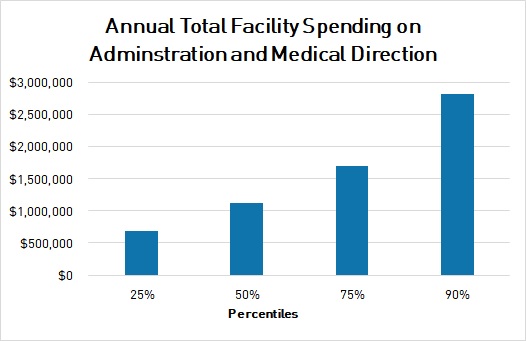Managing physician administrative services is a complex process with many moving parts.
Creating and negotiating dozens, if not hundreds, of agreements takes time, resources and attention to detail. Not to mention, it is no small feat to truly engage physicians in administrative positions.
Yet there is a dimension to physician contracting that is often overlooked: the possibility of having too many agreements. This problem is not just costly; it can pose a compliance issue. An annual review of all contracts against industry benchmarks can help identify risky contracts and reveal opportunities to reduce spending. Internal audits also help to document commercial reasonableness of the positions you have in place.
How do hospitals end up with too many medical directors?
Hospitals don’t intend to have too many medical directors, but a lack of checks and balances can result in such a situation. Circumstances that could lead to too many medical directors are:
• Negotiating individual contracts without considering the organization’s broader financial goals
• Challenging physician relationships that lead to expectations for pay
• Not having a centralized physician contracting process
• Not requiring timesheets or having poor coordination with accounts payable
Benchmarking your organization
If your organization wants to assess its number of directorships, finding an objective measurement can be extremely helpful. MD Ranger produces the distribution of paid administrative positions per hospital by service. Some services have a higher frequency of multiple positions than others, as illustrated below:

A compliance best practice is to review the total number of paid medical directorships and administrative positions at your organization. Larger and more complex organizations generally have more positions, and there may be times when more positions are justified, such as an EHR implementation. However, if you are on the high end of the scale, you may want to review your list of positions more carefully.
How many is too much?
Too many medical directors could put your organization at risk. Many organizations have a handful of contracts that are paid at or above the 90th percentile, due to the hours required or the credentials of the individual physician. However, if individual or aggregate payments are routinely high and/or there are a larger than average number of positions, that is a compliance red flag.
Consider using benchmarks to evaluate your hospital’s total spending. This can uncover hidden compliance risks. According to MD Ranger’s 2018 Facility Totals Benchmarks, the total expenditure on medical direction and administration per facility is as follows:

Ways to avoid having too many physician administrative contracts
Here are some best practices to minimize the risk of paying too much for administrative positions:
Require and check timesheets
Be meticulous about collecting and reviewing physician timesheets. Take the time to cross-reference the duties outlined in the contract with the duties listed on the timesheet.
Centralize the physician contracting process
By keeping track of your physician contracts in a single location and having a team responsible for drafting, negotiating, documenting and renewing these contracts, you lower the risk of non-compliance simply by knowing what’s going on. Think critically to ensure that duties are not being duplicated amongst physicians.
Conduct periodic audits
Whether you do this annually or more frequently, review all physician contracts for compliance with market rates and hours.

